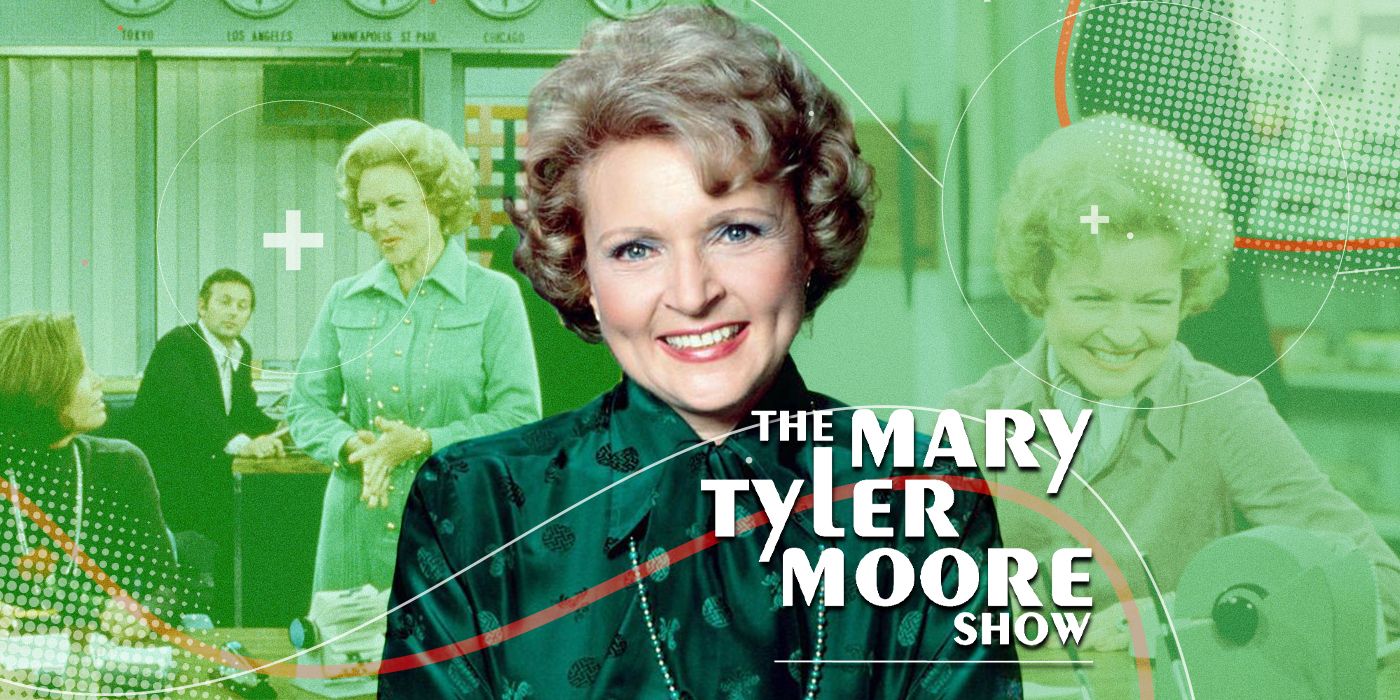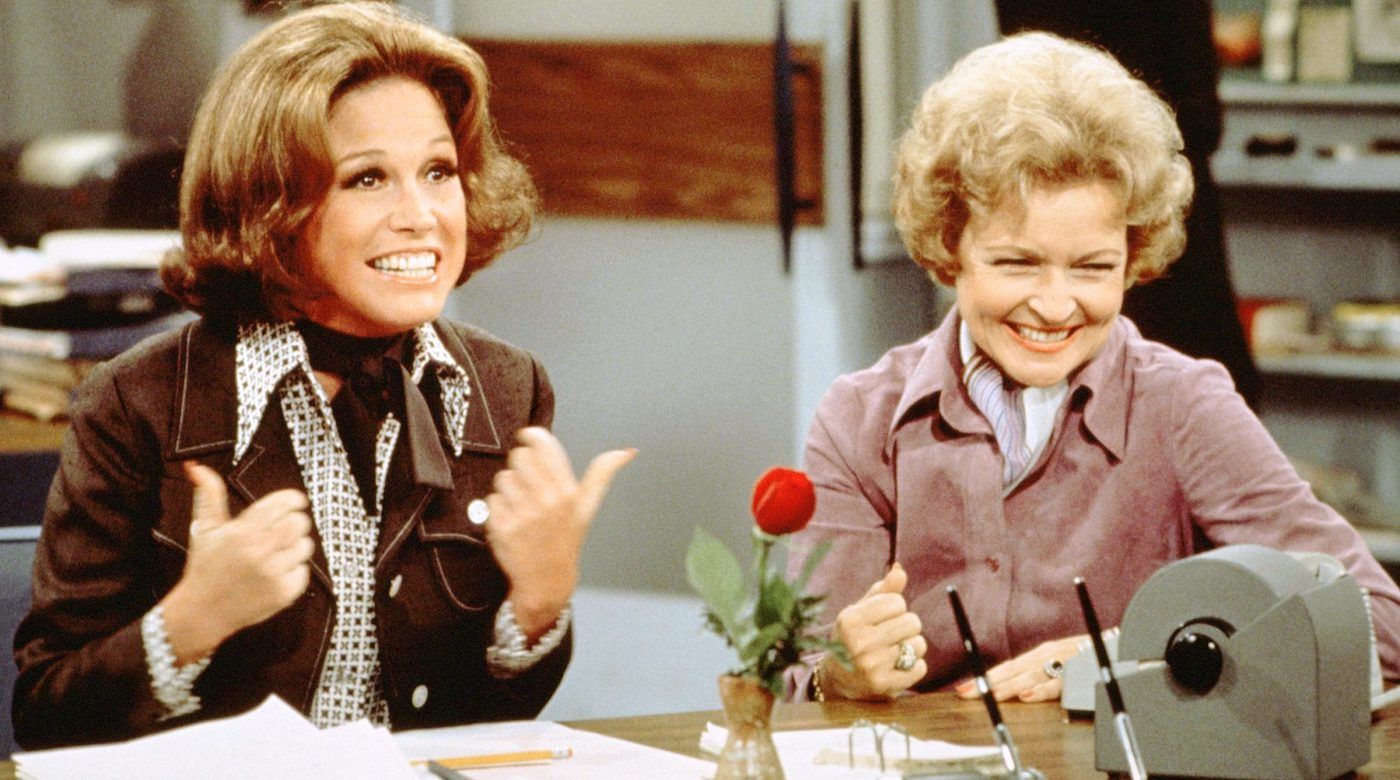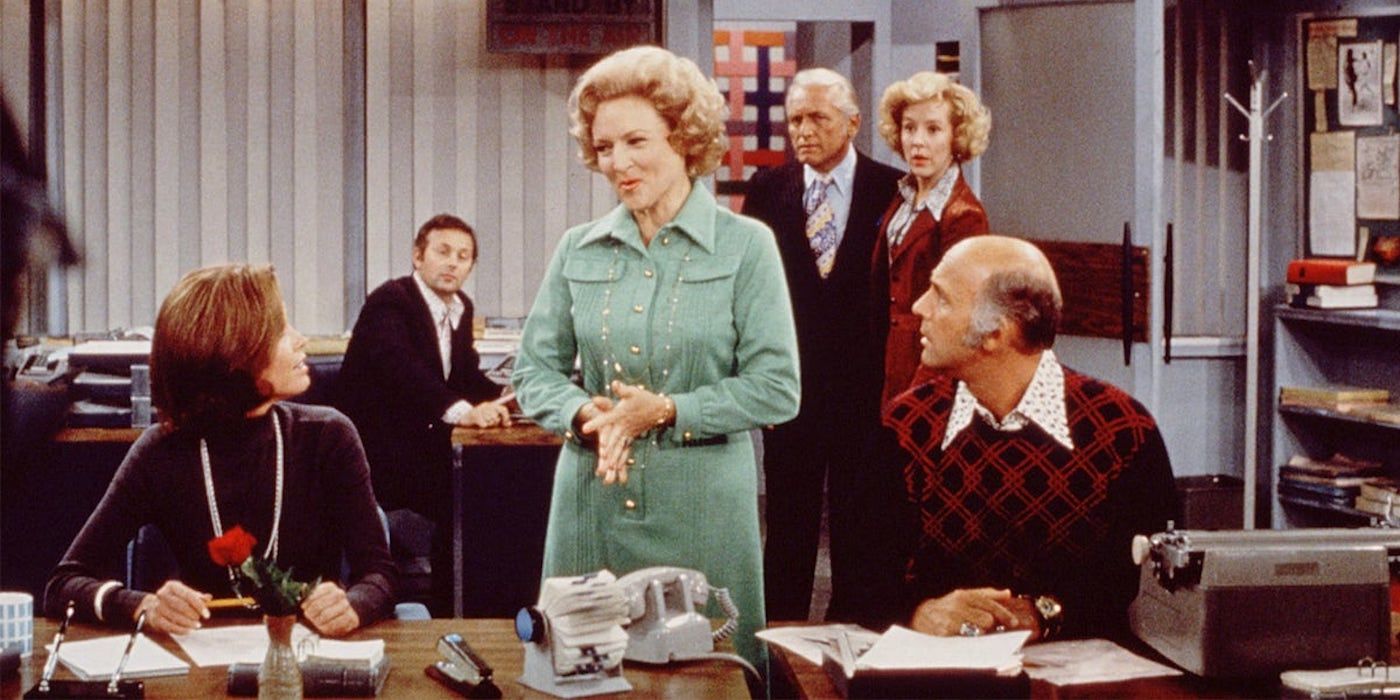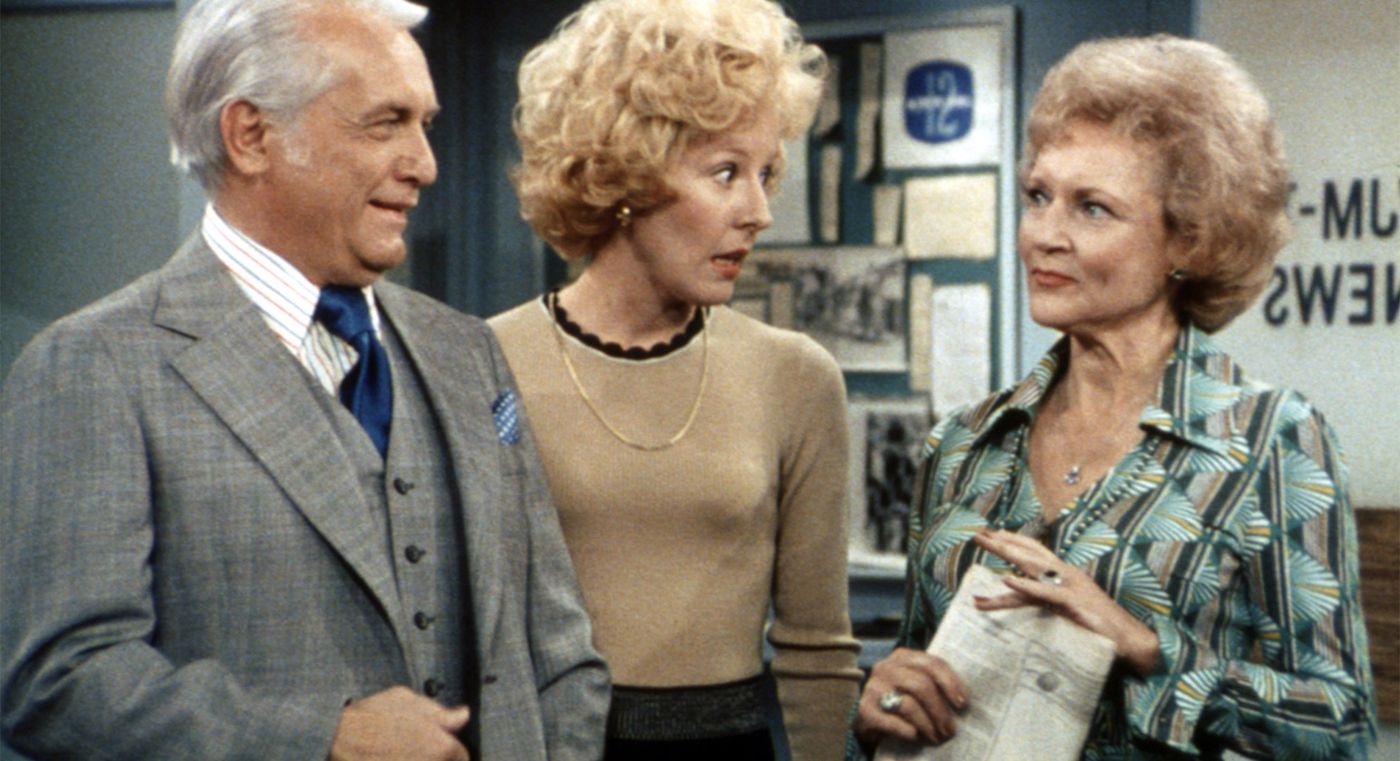To put it mildly, 2021 was a rough year for the cast of The Mary Tyler Moore Show. Earlier in the year, it saw three of its main cast members pass away — Cloris Leachman in January, Gavin McLeod in May, Ed Asner in August — and if that wasn’t enough, this crumminess was truly sealed by the death of Betty White on New Year’s Eve. Though, despite the sullenness of seeing every one of the last living cast members of this joyous, groundbreaking sitcom being laid to rest last year, it’s also hard to get too down about it when they lived such long lives and had such eclectic careers after Mary Tyler Moore ended. Whether it was McLeod’s turn as the captain on The Love Boat, Leachman’s status as the ultimate salty grandma in various movies and TV, or Asner appearing in too many Christmas movies to count as well as what may be his most iconic role, Carl Fredrickson in Up. Yet no one embodies the varied careers of MTM’s cast better than Betty White, who had already spent two decades in television before joining the show mid-way into its run and helped rejuvenate not only The Mary Tyler Moore Show but also the then-51-year-old White’s career, which, somehow, was just getting started.
The Season 4 episode of The Mary Tyler Moore Show, “The Lars Affair”, was written to be about Cloris Leachman’s Phyllis dealing with her husband having an affair with what the original script described as a “Betty White type”. Betty White’s celebrity by this point is a little hard to quantify since it seems like she was the kind of versatile showbiz personality that doesn’t really exist anymore. White started her career performing on radio, where her knack for the medium eventually led to her hosting her own show, aptly called The Betty White Show. This then led to White’s first foray into the then-budding medium known as television in the late ‘40s, where she co-hosted Hollywood On Television, a talk show that she would eventually be the sole host of, and thus being one of the first women to ever host a TV talk show.
Into the ‘50s, her work on the sitcom Life with Elizabeth and a TV version of The Betty White Show would make her synonymous with the medium while also establishing her own production company and becoming one of the first women to call the shots on her own TV shows. Throughout the ‘60s, she became a prolific guest on game and talk shows, making numerous appearances on The Tonight Show, Password, and Match Game, while subtly subverting her wholesome image with a persona that Matt Zoller Seitz described in his recent obituary as “stealth-horny”.
So, by 1973, while still coasting off her talk-show appearances, the producers at The Mary Tyler Moore Show decided to try and cast not just a “Betty White type” in the role of Sue-Ann Nivens, but see if White herself would want the part. By this time, White had become personal friends with Mary Tyler Moore — another groundbreaking woman in television whose unprecedented creative control belied her cheery public image. However, there was a little trepidation over asking White to appear in what was supposed to be a one-off guest appearance, since if she wasn’t right for the part, it might create some awkwardness between Moore and the show’s creative team.
However, when you watch “The Lars Affair”, the idea of Betty White not being perfect for this role is ridiculous. In her first appearance, Sue-Ann Nivens already feels completely fully formed, and considering the character is such an extension of the persona that White had been honing for years on various other TV shows, it was. After her first taping of The Mary Tyler Moore Show, White wasn’t yet scheduled to do any more appearances on the show, but her performance went over so raucously that MTM co-creator James L. Brooks told White, “don’t make too many plans.”
This proved to be great advice since Betty White was asked to make many subsequent appearances on the show that became more and more abundant before she became part of the main cast on Mary Tyler Moore’s last few seasons. During this period, the show was at a crossroads. Cast members Valerie Harper and Cloris Leachman were being slowly phased out of the show, as their break-out status on Mary Tyler Moore would earn them spin-off series that would take their characters with them. This left a potential void in the show’s female cast members, who were essential to the show’s status as a vital embodiment of ‘70s-era feminism.
Fortunately, it was ably filled by Georgia Engel’s Georgette and Betty White’s Sue-Ann. However, the wonderful thing about these characters is that they never feel like mere replacements for Leachman’s Phyllis and Harper’s Rhoda; both Engel and White bring a completely different energy to a show that could’ve been on the verge of becoming stale but instead produced, arguably, its strongest seasons, capped off by a series finale that ranks among the best in TV history.
The character of Sue-Ann Nivens is known throughout the Minneapolis area as the host of The Happy Homemaker, a TV show within the Mary Tyler Moore universe where Nivens is a kind of proto-Martha Stewart, offering cooking and baking advice in addition to how to keep your home looking swell. She also works at the same building as the rest of the characters on Mary Tyler Moore, who work on the news show for the fictional local TV station WJM, where Nivens show also resides. This makes Sue-Ann a classic “pop-in” character, whom the storylines only occasionally revolve around, though she’s always likely to pop into the WJM newsroom, armed with a biting double entendre or to sow some sort of chaos due to her reputation as a man-eater. There perhaps isn’t a better example of this than the episode “Once I Had A Secret Love”, where after years of unwanted flirting with Asner’s Lou Grant, Nivens finally sleeps with him, which Lou tries vehemently to keep a secret from his co-workers to little success.
This juxtaposition of Nivens being this sweet at-home type who also is constantly making references to her sexual escapades is obviously comedic dynamite, and while this character could’ve easily felt one-note, White is able to constantly make it funny while occasionally even adding a little pathos. You could also say that it was a perfect match between where White was in her career and where The Mary Tyler Moore Show was at the time. While the first few seasons of MTM were revolutionary on the mere grounds that it depicted a single working woman who wasn’t terribly concerned with being defined by a man, the second half of the show’s run saw their writer’s room and the material becoming even stronger. The well-oiled machine that the show had become was a perfect match for someone who was as naturally fluent in the language of television as Betty White, and there’s even a little bit of biography in White playing a character who has spent most of her life on TV.
Of course, the amazing thing about Betty White’s return to sitcoms on The Mary Tyler Moore Show was that despite the actress being middle-aged at the time, it was the first of many more resurgences in her career. In addition to the two Emmys she received for her work on MTM, she would go on to win four more Emmys over the course of her career in addition to an honorary one in 2015. The most famous of these Emmy-winning roles is undeniably Rose Nylund on The Golden Girls, though it wasn’t the role she initially auditioned for when the show was being cast in 1985.
Instead, she auditioned for the more promiscuous Blanche, though a producer recommended White try out for the more sweetly naive Rose since she’d already played the former type of character to perfection on Mary Tyler Moore. The success of this role kept White’s TV relevance rolling through the ’90, ’00s, and ‘10s, as she remained a hilarious talk show guest while becoming a beloved icon to new generations. Though you could easily say there wasn’t a role she was better suited to play than TV star Sue Ann Nivens, seeing as Betty White lived and breathed television like no one else. If only she was still around to make some well-timed wisecrack to undercut all the sadness that goes with losing such a legend.




